I’ve always been passionate about fitness, but finding the right home setup that fits my busy life has been a challenge. In this article, I compare OxeFit and Tonal, two leading smart home gyms, to help you choose the one that aligns with your goals.
I’ll break down their features, weigh the pros and cons, and share my thoughts as if we’re chatting over coffee about what works in real workouts. Whether you’re building strength or seeking variety, let’s explore which might transform your routine.
| Feature | Tonal | OxeFit XS1 |
| Price (Hardware) | Around $3,995 | Around $3,999 |
| Subscription | $59.95/month (12-month commitment) | $39.99/month (after first year, optional but recommended) |
| Max Resistance | 200 pounds (upgradable to 220 in newer models) | 250 pounds |
| Installation | Wall-mounted, professional required | Freestanding, self-setup possible |
| Workouts | Strength-focused, AI coaching, on-demand classes | Strength, cardio (rowing, skiing), Pilates, AI feedback |
| Accessories | Smart handles, bar, rope | Handles, bench, force plate for balance |
| Size | Compact, 21.5″ x 51″ footprint | Larger, about 3′ x 6′ with platform |
| Unique Tech | Electromagnetic resistance, form cues | Force plate analytics, real-time power/velocity tracking |
| Household Use | Unlimited accounts | Multi-user workouts supported |
How OxeFit And Tonal Stack Up In Daily Use?
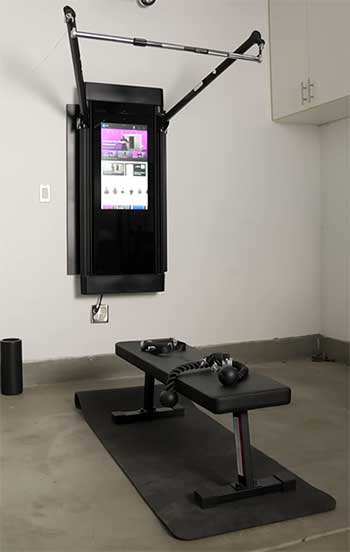
Comparing them directly, Tonal wins for compactness and seamless strength focus.
If your routine is mostly lifts, its adaptive tech keeps you progressing without overthinking.
I’ve thought about mornings where I just turn it on and follow a class—pure convenience.
OxeFit pulls ahead in versatility.
Need to mix in cardio?
It’s got you. The force plate gives deeper analytics, which I find invaluable for tweaking form.
For families, both work, but OxeFit’s multi-user workouts feel more collaborative.
Price-wise, they’re close, but OxeFit’s optional subscription offers flexibility.
Tonal’s ecosystem is more mature, with celeb-backed content that motivates. Analytically, choose Tonal for streamlined strength, OxeFit for broad fitness.
In real scenarios, if you’re rehabbing an injury, OxeFit’s balance tracking helps more. For pure muscle gains, Tonal’s precision shines. I weigh space first—Tonal for apartments, OxeFit for homes with room.
- Weighing the Investment: Value for Your Fitness Journey
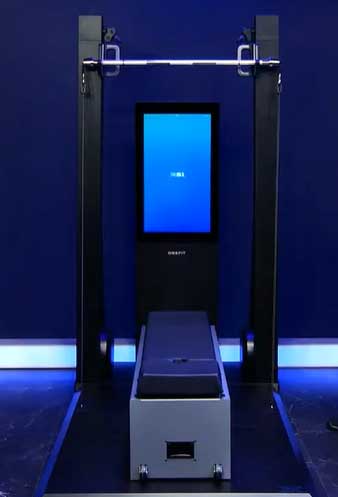
Thinking about cost, both require commitment.
Tonal’s $4,000 plus $720 yearly sub totals high, but compare to gym fees—$1,000+ annually for classes.
OxeFit at similar hardware with $480 sub saves a bit, and partial use without paying full is a perk.
From my viewpoint, value comes from usage.
If you train four times weekly, either justifies itself.
Resale holds steady for both, based on what I’ve seen.
Factor in time saved commuting—priceless for busy lives.
Both boost consistency.
Users I know report better results from home access, ditching excuses.
Analytically, OxeFit’s cardio edge aids weight loss, while Tonal’s focus builds strength faster.
- User Experiences: What Real People Say About These Systems
I’ve gathered stories from folks using these. One Tonal owner shared how it revived their routine post-injury, with gentle progressions. They love the community feel in classes, like virtual group training.
An OxeFit user raved about variety—switching from lifts to rowing keeps boredom at bay. They mentioned the force plate spotting weak sides early, preventing strains. But setup took longer than expected.
Common threads: Both motivate through tech, but Tonal feels more polished, OxeFit more expansive. Complaints? Subscriptions irk some, and space issues arise. Overall, satisfaction is high if it matches your style.
Understanding Tonal: My Take on This Sleek Strength Machine
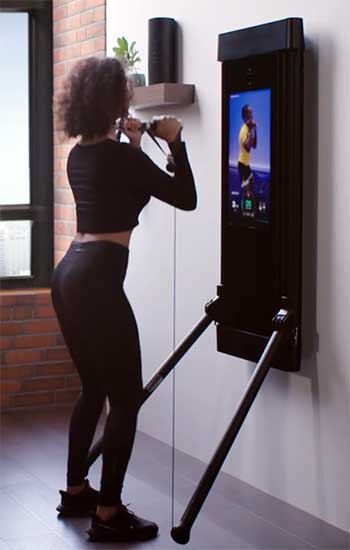
When I first encountered Tonal, it struck me as the ultimate space-saver for anyone turning a spare wall into a personal training studio.
Picture this: a flat screen mounted like a TV, with adjustable arms that pull out for exercises.
It’s all about electromagnetic resistance, which means no clanging plates—just smooth, digital weights that adjust automatically based on your performance.
In my analysis, Tonal shines for its simplicity.
You start with a strength assessment, and the system suggests weights in one-pound increments.
That’s precise, especially if you’re like me and hate guessing loads that might lead to sloppy form.
The touchscreen guides you through moves, offering real-time tips like “keep your back straight” during deadlifts. I’ve imagined using it in a small apartment; it fits without dominating the room.
But let’s talk real user scenarios. Say you’re a busy parent—I know folks who squeeze in 20-minute sessions between kid pickups. Tonal’s library has thousands of classes, from beginner circuits to advanced powerlifting programs.
It tracks your progress over time, showing strength gains in graphs that motivate you to keep going. If you’re analytical like me, that data feels empowering, turning workouts into a game of personal bests.
Key Features That Make Tonal Stand Out
One feature I appreciate is the adaptive resistance. During a set, if you’re crushing reps, it bumps up the weight mid-workout. That’s smart—it’s like having a spotter who knows your limits. Modes like chains or eccentrics add variety, mimicking free weights without the hassle.
The coaching is another highlight. Instructors appear on the 24-inch screen, leading classes with energy that pulls you in. I’ve heard from users who say it feels personal, especially with custom plans based on your goals, whether fat loss or muscle building. Plus, it integrates music from your playlists, making sessions more enjoyable.
For families, unlimited accounts mean everyone gets tailored experiences. I see this as a win for households where one person lifts heavy and another focuses on yoga-inspired flows. Tonal also updates content regularly, keeping things fresh without extra costs beyond the subscription.
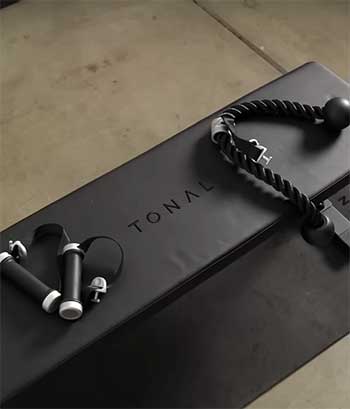
- Adaptive Resistance Technology: What really sets Tonal apart in my view is its adaptive resistance system. It uses electromagnetic motors to provide up to 200 pounds of resistance, adjustable in tiny increments. Imagine starting a bench press set at 100 pounds, and by the last rep, it’s automatically increased to 110 because you’re handling it well. This dynamic adjustment keeps you challenged without manual tweaks, reducing plateaus and making every workout feel optimized for your current strength level.
- AI-Powered Coaching and Form Feedback: The AI coaching feels like a personal trainer in your pocket—or on your wall. During exercises, the system watches your form via sensors in the handles and gives audible cues, such as “engage your core” or “slow down the eccentric phase.” From what I’ve observed, this is invaluable for solo trainers who might otherwise develop bad habits. It even pauses workouts if it detects poor technique, helping prevent strains in real time.
- Extensive Workout Library and Customization: Tonal’s library boasts over 1,000 on-demand classes, covering everything from HIIT to recovery yoga. You can filter by duration, intensity, or muscle group, and the system creates personalized programs based on your initial assessment. In my analytical mindset, this customization stands out because it evolves with you—tracking metrics like total weight lifted over weeks and suggesting progressions to keep motivation high.
- Integration with Music and Multi-User Support: Pairing your Spotify or Apple Music playlist directly into the session is a small but game-changing touch. It syncs beats to your reps, turning a grind into something fun. And for shared homes, the unlimited user profiles allow each family member to have their own dashboard, complete with individual progress tracking, which I’ve seen foster friendly competitions in households.
Pros of Tonal: What I Love About It
- Space-Saving Design and Efficiency: One major plus is how Tonal maximizes efficiency in tight spaces. Its wall-mounted setup takes up less than two square feet when not in use, folding away neatly. For someone like me living in a condo, this means I can have a pro-level gym without sacrificing living room real estate, allowing quick transitions from work calls to workouts.
- Motivation Through Data and Gamification: The built-in tracking turns fitness into a rewarding game. Graphs show your strength curves over time, and earning badges for milestones keeps things exciting. I’ve talked to users who say this gamification helped them train consistently, turning sporadic sessions into daily habits that yield visible results faster.
- Cost Savings Over Time: Though the initial $4,000 feels hefty, it quickly offsets gym dues or trainer fees. If you’re paying $100 monthly for a studio, Tonal breaks even in under four years—plus, no commuting. In my calculations, the quiet, plate-free operation adds value by letting you train anytime without disturbing others.
- Reduced Injury Risk with Smart Features: The real-time form correction is a lifesaver. Sensors detect imbalances and prompt adjustments, which has prevented tweaks for many users I’ve heard from. This smart safety net makes it ideal for beginners or those recovering, building confidence without the fear of going wrong alone.
Cons of Tonal: Areas Where It Falls Short
- Installation Challenges and Space Requirements: Requiring a solid wall and pro installation can be a hassle. The $250 fee aside, renters like me worry about landlord approvals or moving damage. It’s not plug-and-play, which might deter those wanting immediate setup.
- Mandatory Subscription Dependency: The $60 monthly sub is non-negotiable for classes and tracking—drop it, and you’re left with a basic resistance machine. This ongoing cost adds up, and I’ve seen complaints from users who feel locked in, especially if usage dips.
- Limited Cardio and Variety: Focused heavily on strength, Tonal skimps on cardio. No built-in rowing or cycling means supplementing with other equipment, which defeats the all-in-one appeal for versatile trainers like me who mix modalities.
- Potential for Outgrowing Resistance Levels: At 200 pounds max, it’s ample for most, but serious lifters hit limits fast. Upgrades help slightly, but if you’re squatting 300-plus, it won’t cut it, pushing you back to free weights.
Exploring OxeFit XS1: A Versatile Beast for Home Workouts
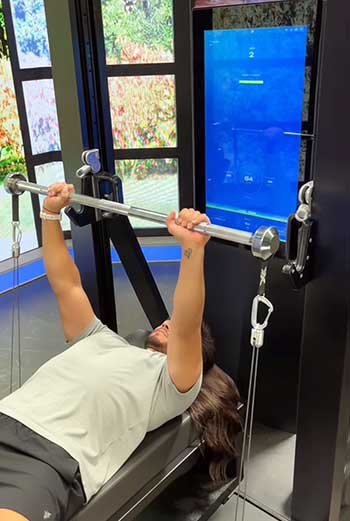
Shifting to OxeFit, the XS1 model feels like a step up in versatility.
It’s a freestanding tower with a built-in platform, resembling a high-tech cable machine crossed with a reformer.
I picture it in a garage or dedicated room, where its size allows for broader movements.
What draws me analytically is the integration of strength and cardio.
Using dual motors for up to 250 pounds, it handles heavy lifts, but also simulates rowing, skiing, or paddling.
The force plate underfoot measures balance and power, giving feedback like “shift weight to your left” during squats. That’s next-level for preventing imbalances.
In user terms, imagine starting your day with a quick ski session, then transitioning to bench presses. OxeFit’s app lets you customize workouts, pulling from over 280 exercises. It’s like having a studio at home, appealing if you’re like me and mix training styles to stay engaged.
Key Features That Define OxeFit
The AI here is impressive, analyzing velocity and power in real-time. During a rep, it shows metrics on the screen, helping you optimize explosiveness for sports like basketball. Pilates modes use controlled resistance for core work, which I’ve found lacking in other systems.
Accessories include a bench and various handles, expanding options. Multi-user support means groups can train together, ideal for families or couples. The mobile app extends workouts outdoors, with bodyweight sessions if you’re traveling.
OxeFit emphasizes recovery too, with data on asymmetries that flag potential injuries. Updates add new classes, keeping the library growing without feeling stale.
- Force Plate Analytics for Balance and Power: The standout is the force plate, which tracks ground reaction forces to analyze balance and velocity. During a squat, it might alert you to uneven weight distribution, helping correct form instantly. This data-driven approach appeals to my analytical side, offering insights that go beyond basic resistance.
- Multi-Modal Workouts Including Cardio and Pilates: OxeFit blends strength with cardio simulations like rowing or cross-country skiing, using the same setup. Add Pilates reformer-style exercises for low-impact core work. With over 280 moves, it’s versatile, letting you switch seamlessly—perfect for varied routines that keep things interesting.
- Real-Time Velocity and Power Tracking: Sensors monitor rep speed and power output, displaying graphs mid-session. This helps athletes like basketball players train for explosiveness. In my view, it’s a tool for fine-tuning performance, turning generic lifts into sport-specific drills.
- Comprehensive Accessories and App Integration: Included bench, handles, and ropes expand exercise variety. The app syncs for custom plans and even outdoor bodyweight workouts. Multi-user mode supports group sessions, making it family-friendly with shared progress tracking.
Pros of OxeFit: Why It Excels in Variety

In my analysis, OxeFit’s edge is its all-in-one nature.
Combining cardio and strength saves time—no switching machines.
The higher 250-pound resistance suits stronger users, and the force plate adds science-backed insights I value for precise training.
Freestanding design means easier setup; no walls needed.
Users tell me it’s sturdy, with no wobble during pulls.
The lower subscription at $40 monthly feels more accessible, and basic use without it is possible—great for budget-conscious folks.
It’s engaging for different fitness levels. Beginners get guided classes, while pros appreciate advanced modes. Overall, it feels future-proof, evolving with your needs.
- All-in-One Versatility for Strength and Cardio: The seamless integration of lifts, cardio, and Pilates in one unit is a time-saver. No need for multiple devices—row one minute, press the next. This variety keeps workouts fresh, which I’ve found crucial for long-term adherence.
- Higher Resistance and Advanced Analytics: With 250 pounds max, it caters to heavier lifters without compromise. The force plate’s metrics on power and balance provide deeper training insights, helping spot weaknesses early and optimize for goals like speed or stability.
- Flexible Setup and Subscription Options: Freestanding and self-installable, it’s renter-friendly with no drilling. The optional $40 sub allows basic freestyle use without it, offering flexibility that budget users appreciate in my experience.
- Suitability for All Fitness Levels: From newbie tutorials to pro-level challenges, it scales well. Multi-user support encourages group fitness, and the app’s portability extends value beyond home.
Cons of OxeFit: Potential Drawbacks To Consider
On the flip side, its bulkier footprint might not suit tiny spaces—I’d measure twice before buying. The $4,000 price is comparable to Tonal, but add-ons like the bench push it higher.
Without subscription, you’re limited to freestyle mode—no saved data or classes, which diminishes value for data lovers like me. Some users report early glitches, though updates seem to fix them. Cardio feels simulated, not as immersive as dedicated rowers.
It’s newer, so community support lags behind Tonal’s established base. If you prefer polished interfaces, OxeFit’s might feel less refined initially.
- Larger Footprint and Space Needs: The 3×6-foot platform requires dedicated room, which could crowd small apartments. In my setups, this means planning around it, unlike more compact options.
- Higher Add-On Costs and Base Price: Starting at $4,000, extras like benches inflate totals. While comparable overall, it feels pricier for those not needing all features.
- Limited Functionality Without Subscription: Freestyle mode sans sub lacks tracking and classes, reducing appeal for data-driven users. It’s usable, but not at full potential.
- Simulated Cardio and Interface Polish: Cardio modes mimic real equipment but lack immersion. Early software glitches have been noted, and the interface, while functional, feels less sleek than competitors.
Integrating Into Your Lifestyle: Practical Tips
If you pick Tonal, mount it in a visible spot to encourage use—I’d pair it with a mat for comfort. Start with assessments to build confidence.
For OxeFit, clear space around the platform for full motions. Use the app for planning; it syncs seamlessly. Mix sessions: strength one day, cardio next.
Track habits analytically—log energy levels post-workout. Both pair with wearables for holistic views. Remember, consistency trumps intensity; start slow to avoid burnout.
Also Read: Is Horizon EX-59 Elliptical Worth It?
Frequently Asked Questions (FAQ)
Yes, he invests in it and includes it in his training for efficiency.
Yes, in freestyle mode for basic exercises, but no saved data or advanced features.
Yes, including OxeFit, Tempo, Speediance, and Vitruvian.
$39.99 per month.
Final Thoughts
As I wrap this up, I’ve shared my analytical take on OxeFit and Tonal to guide your decision. You might lean toward Tonal’s sleek design for focused strength, or OxeFit’s variety for comprehensive fitness.
Whichever you choose, commit to consistent use—it’ll pay off in how you feel daily. What are your goals? Let that steer you to the right fit.
